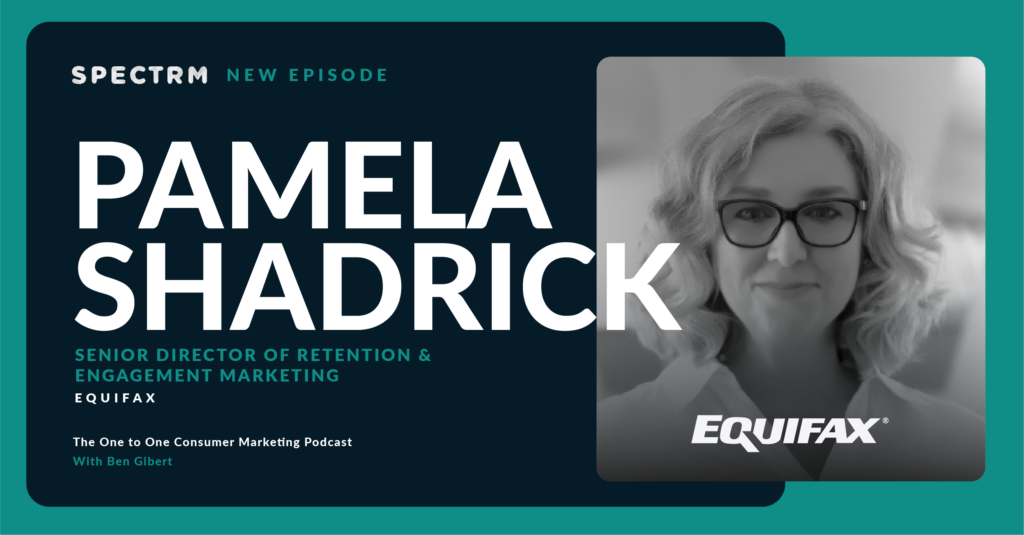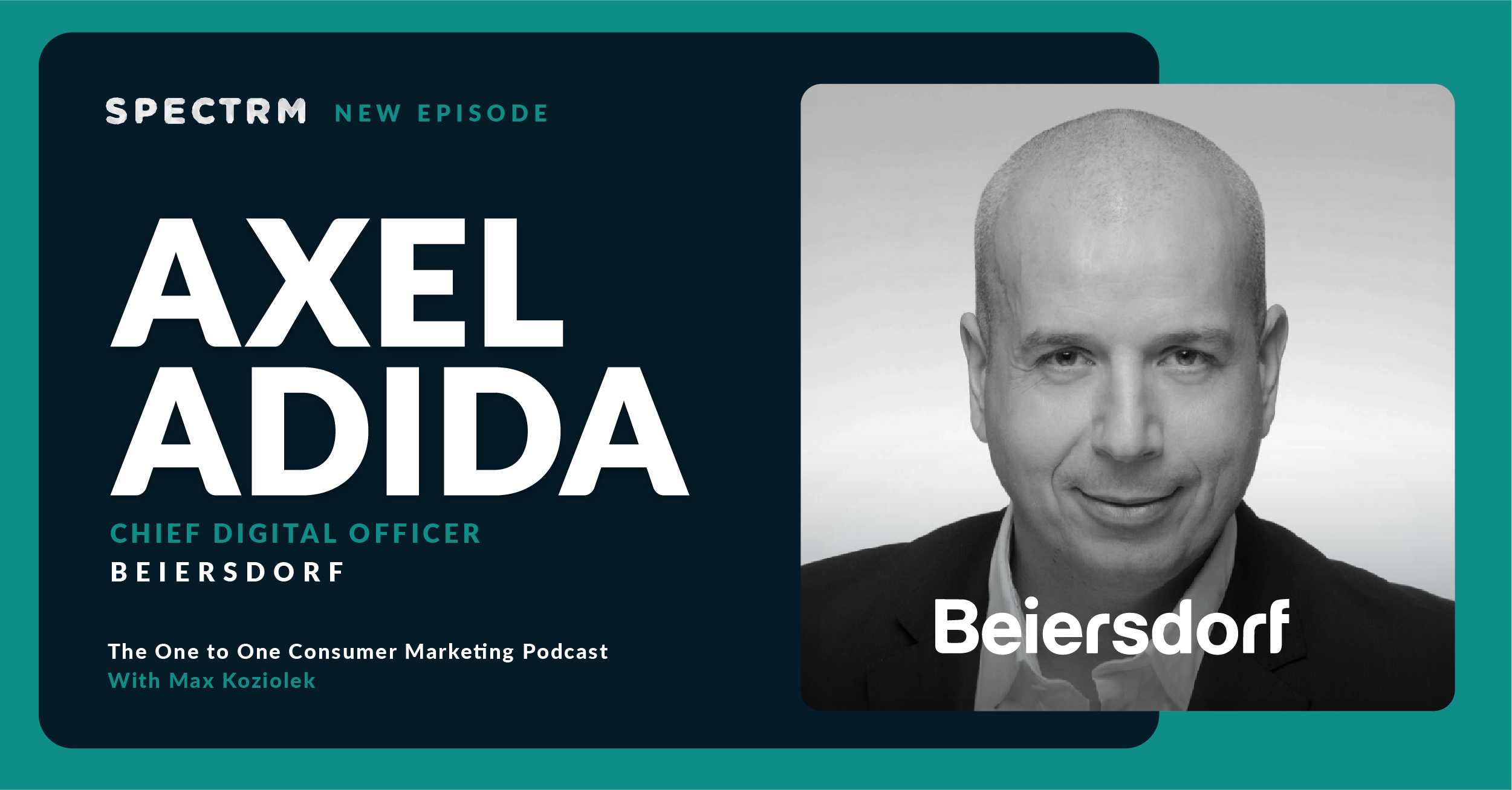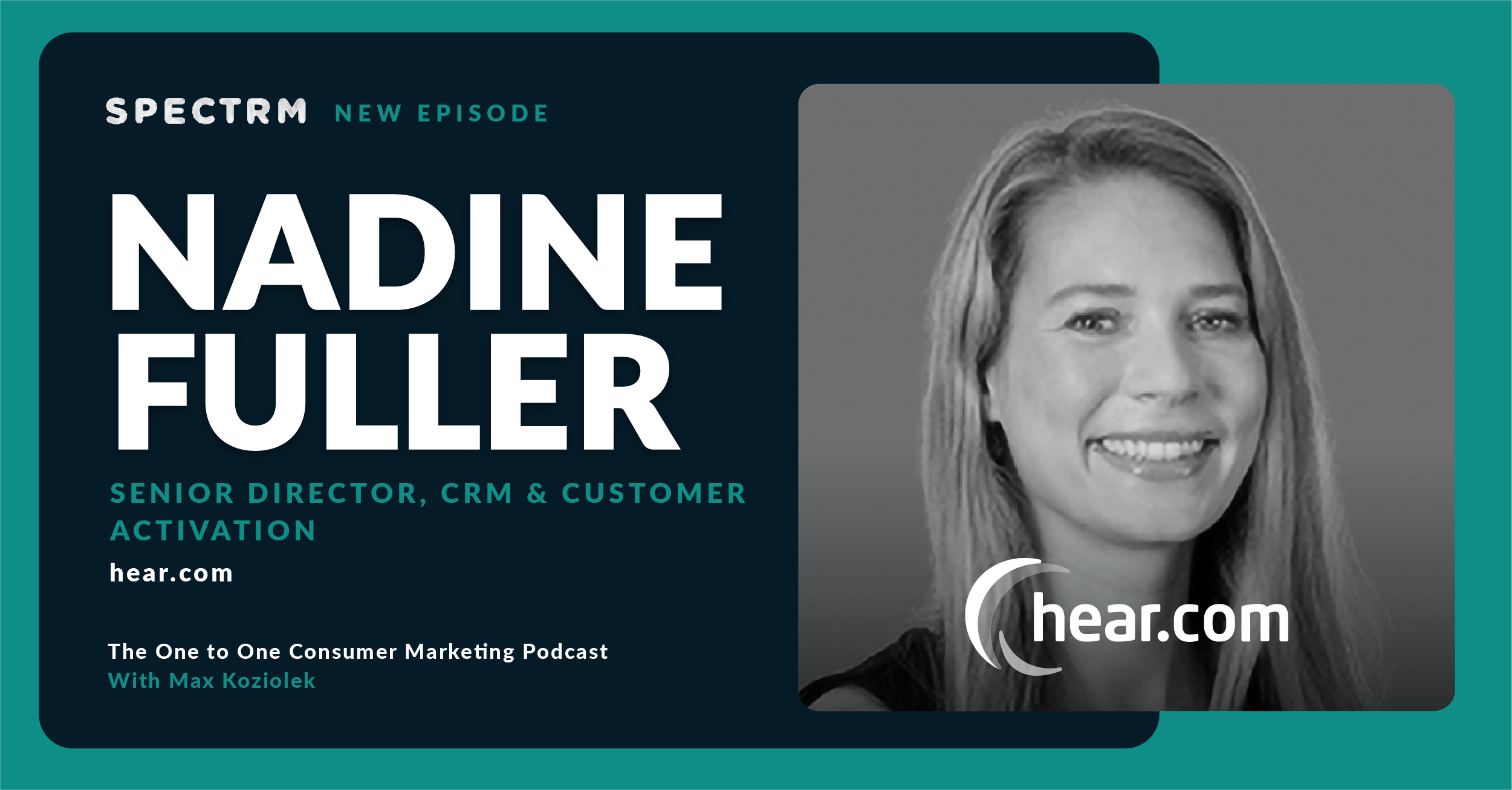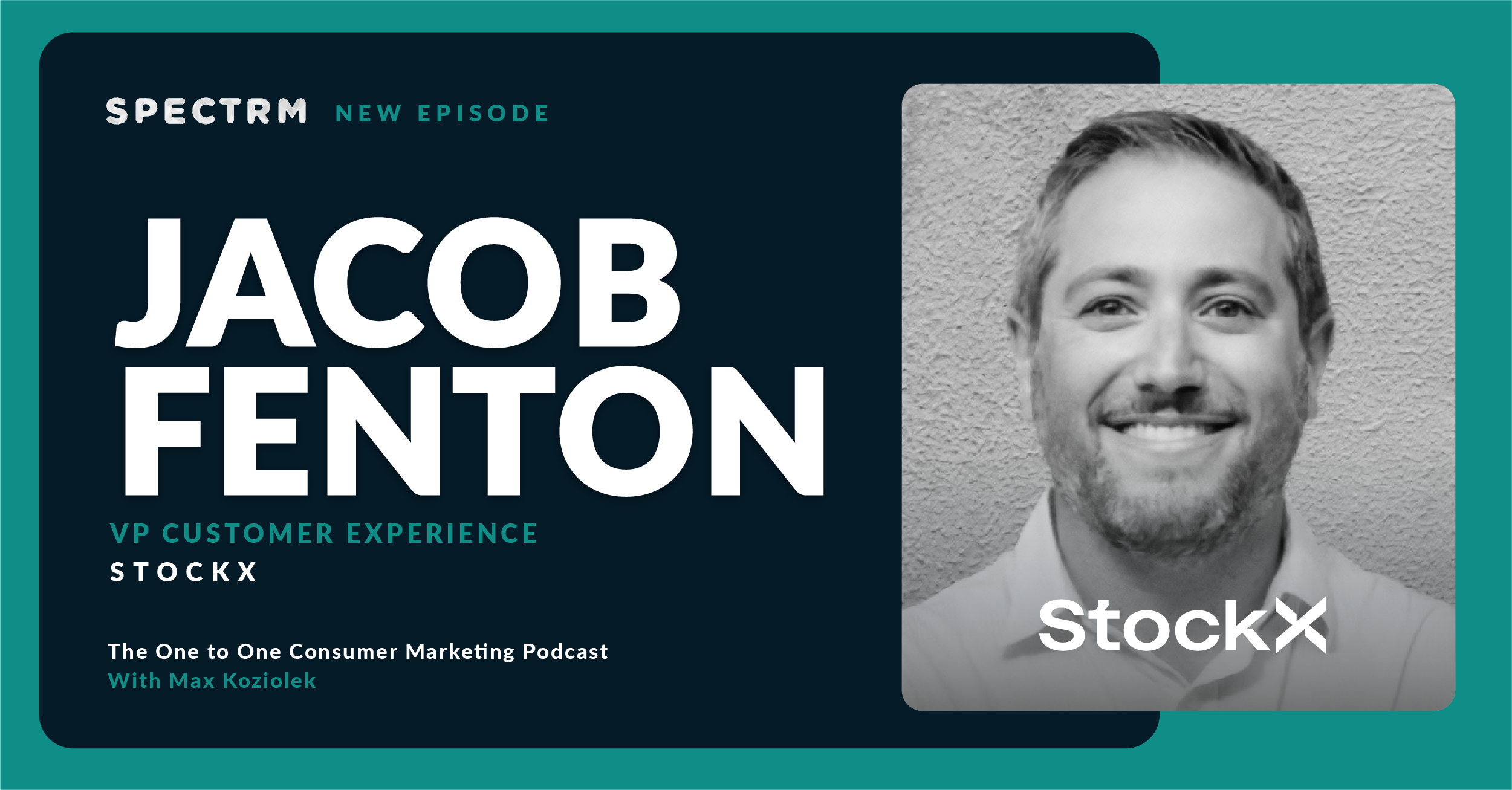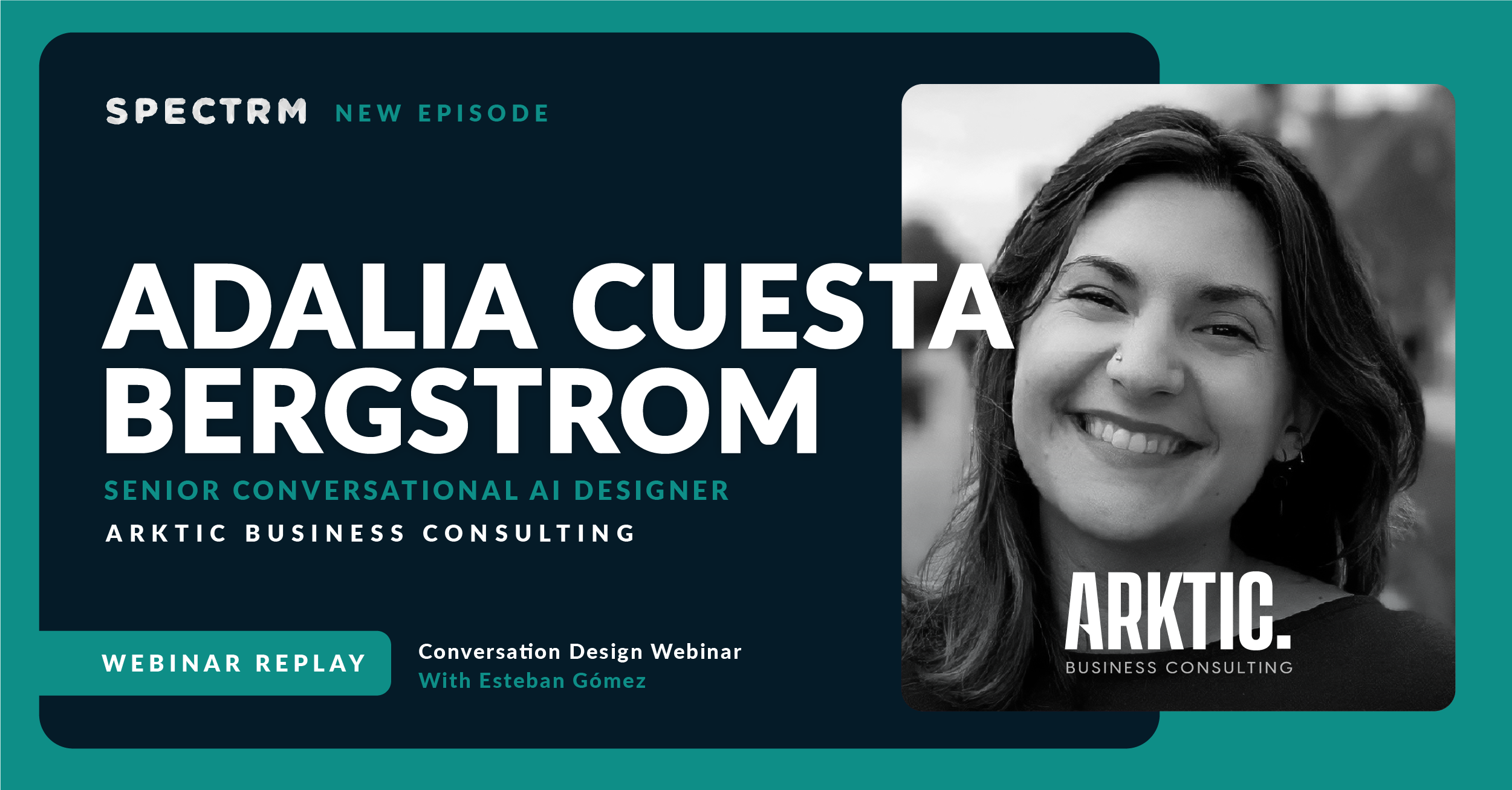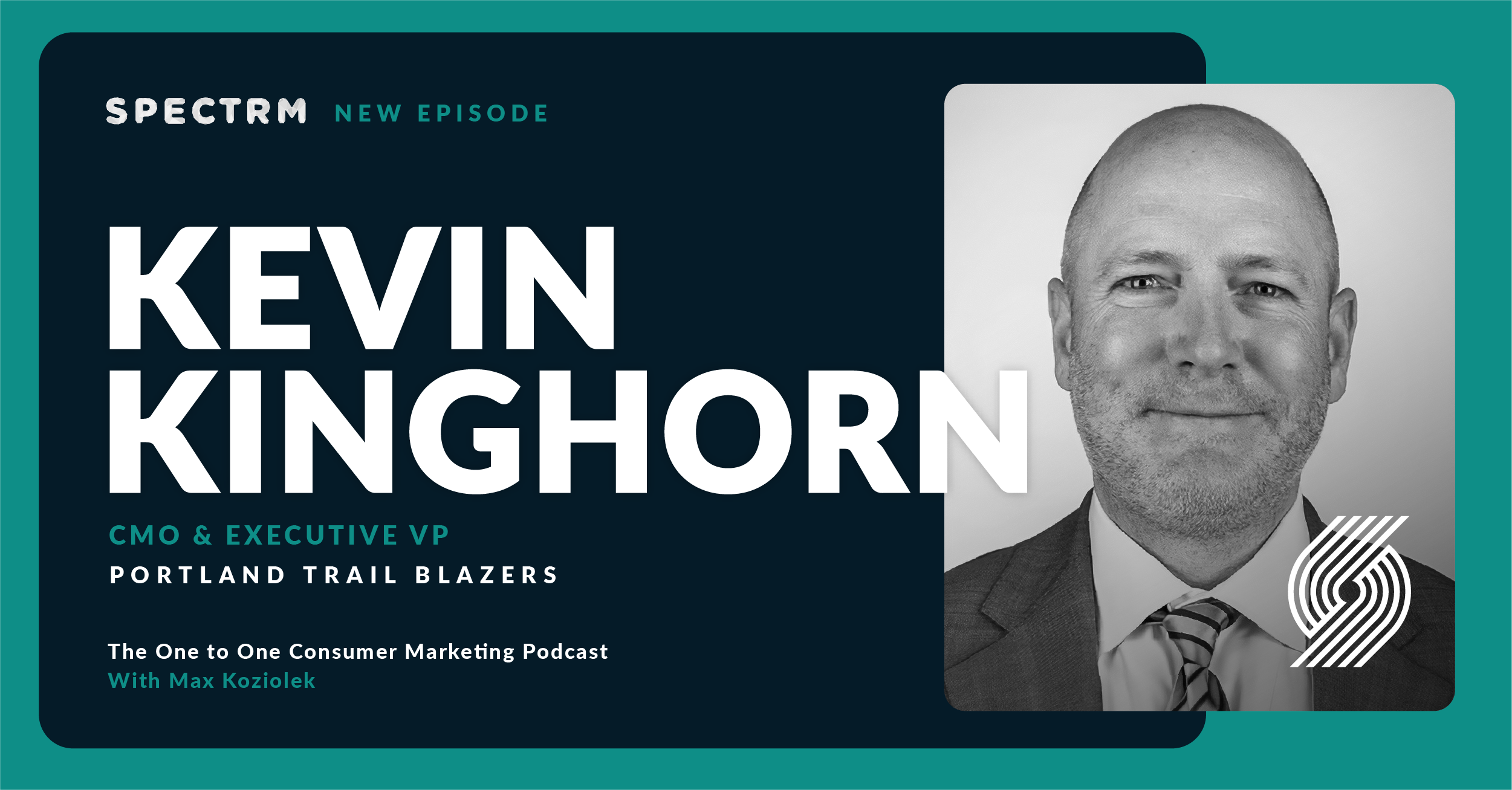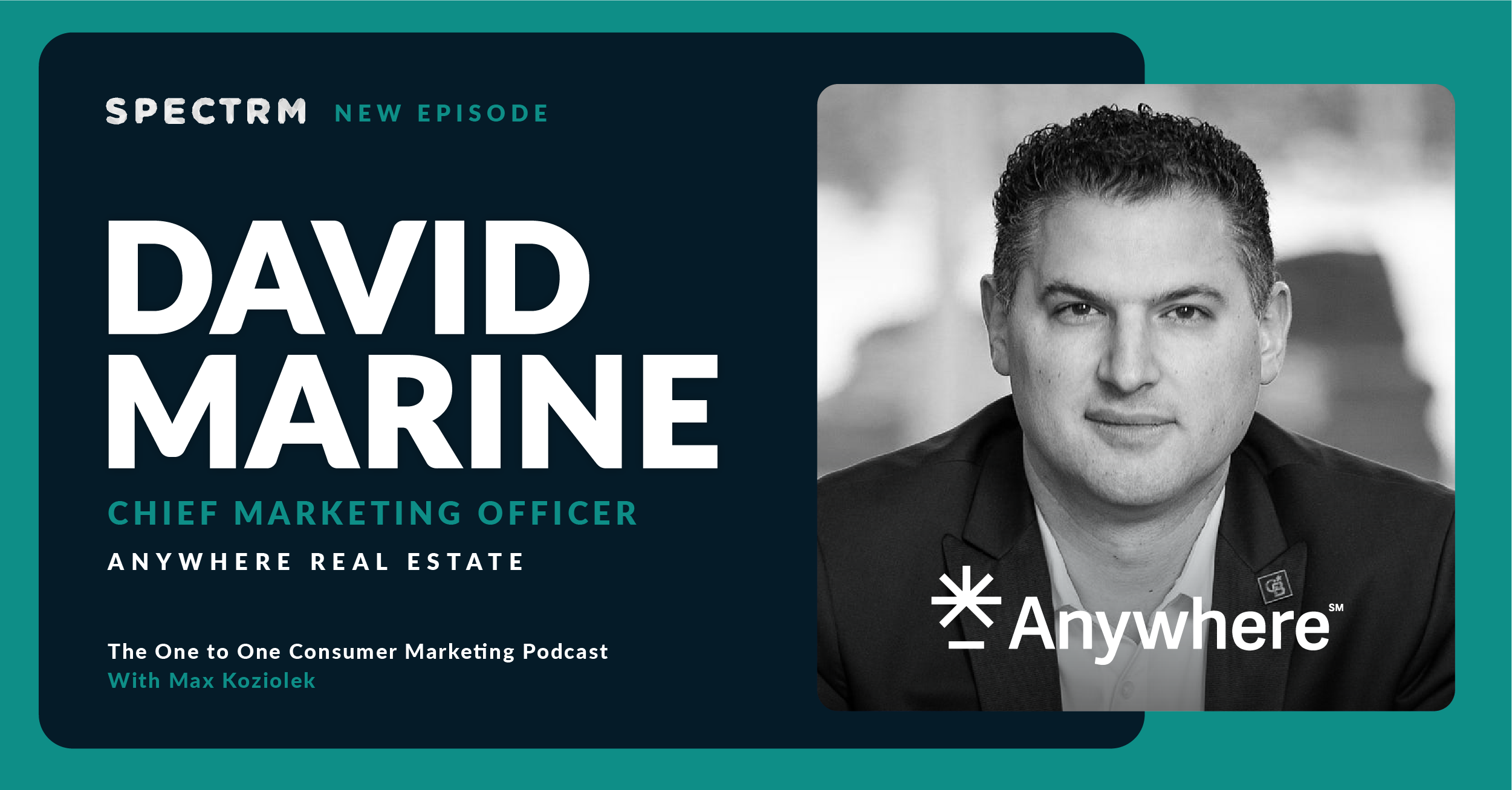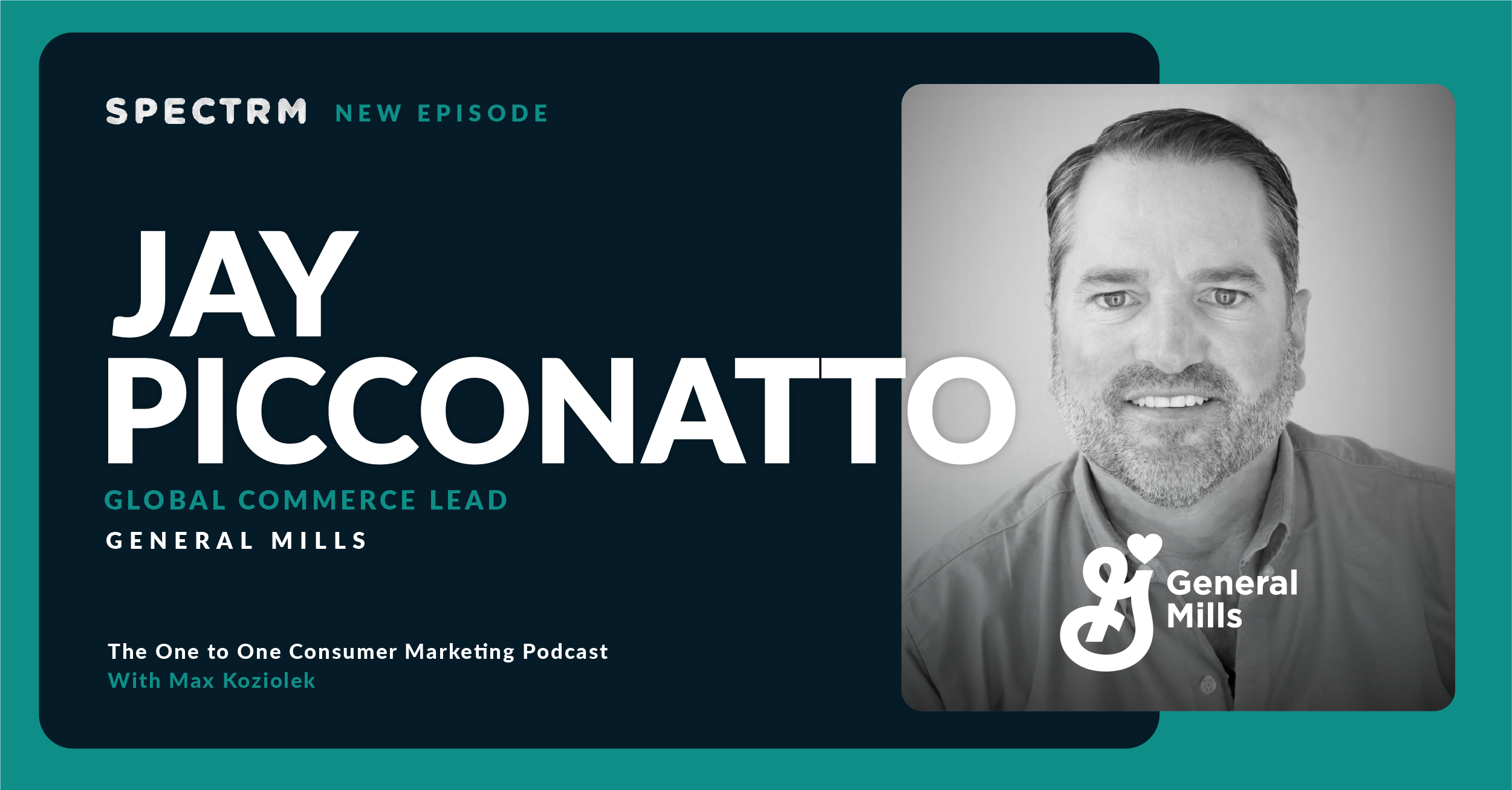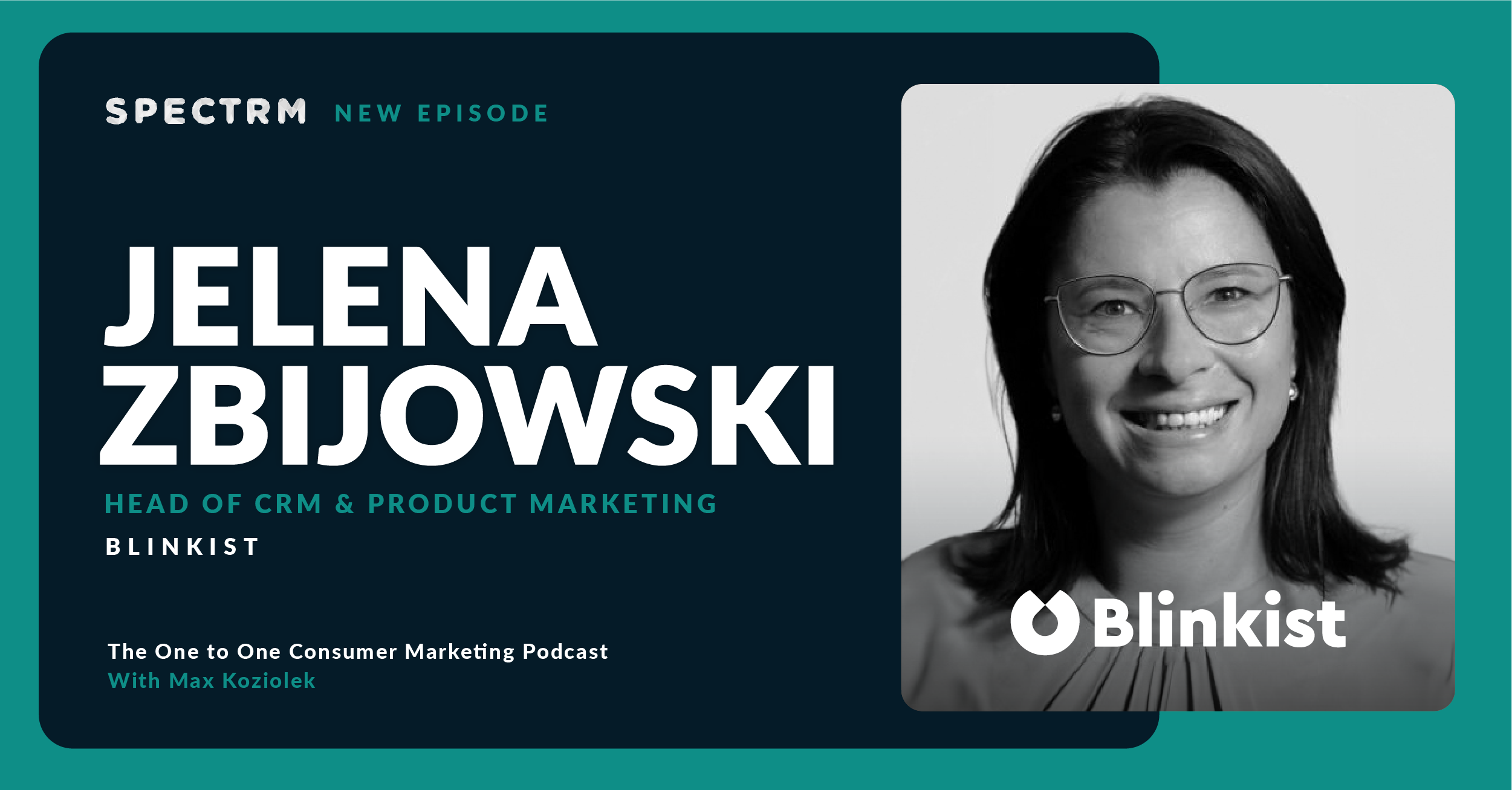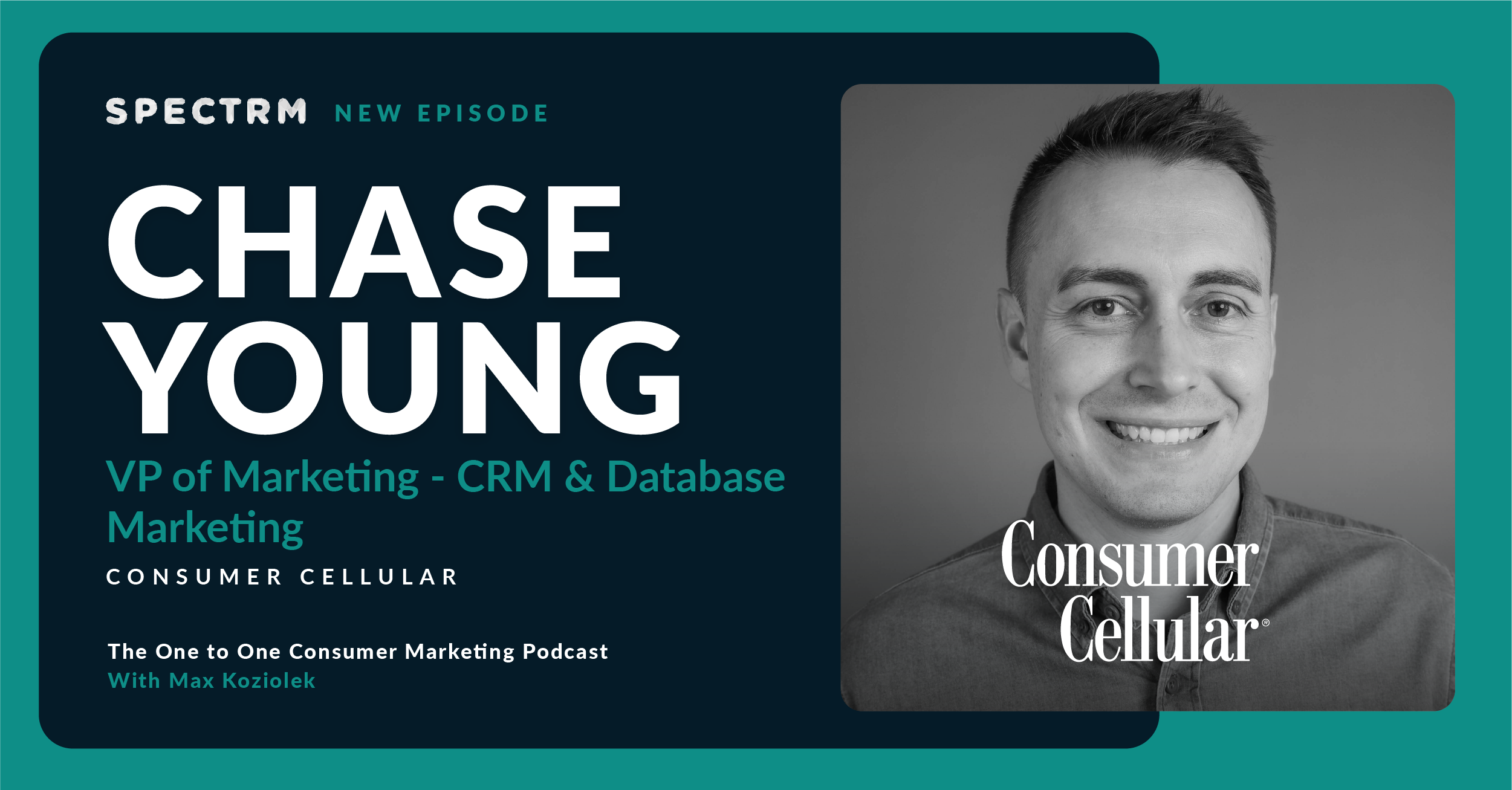Summary
Ben speaks with Pamela Shadrick, Senior Director of Retention & Engagement Marketing at Equifax, a credit reporting agency. They discuss the biggest shifts in digital marketing, including more customer centricity, and how despite market changes and challenges, foundational marketing principles will keep you continuing to grow. They also discuss the areas to focus on for increased customer retention, how to scale your personalization efforts, the danger of chasing trends and channels, and why you shouldn’t be afraid to challenge the status quo.
Topics discussed
- The evolution of Pamela’s career, from starting at a time when marketing was just starting to evolve into digital, to her new role at Equifax.
- How the biggest shifts in digital marketing included moving from product- or brand-centered marketing to centering on the customer and their journey.
- Why, despite what’s changing in the market, you should keep the basic principles of marketing — strategy, data, technology, and content — as your foundation for continued engagement, retention, and growth.
- How lifecycle marketing is a discipline, and why customer retention needs to focus on drawing customers into a shared purpose and intent, not pushing content at them.
- The elements of scaling your personalization efforts, like having the right data, design, channels, and understanding of your customer.
- The future of consumer marketing, including the importance of relationships and how human-like AI and robot-like humans will impact that connection.
- Three pieces of advice for marketers include having a foundation of marketing principles, not chasing trends, and not being afraid to challenge the status quo.
**Pamela Shadrick appears on this podcast as an individual contributor. Statements made by Pamela are solely her own and are not intended to represent Equifax or speak on behalf of the company in any way.
I do think we are into some economic uncertainty and sometimes that requires us to 'Do more with less.' But to be honest with you, I've heard that throughout my entire marketing career. So we still have to take care of sustainable growth, we still have to look at reducing risk, making sure our customer experiences outperform, also making sure that we shore up those current capabilities, going to stretch marketing's legs a little bit, and all within the data and tech space which really marketing is focused on heavily these days.
Guest biography

- Skilled at building, developing and mentoring high-performance teams that deliver consistent results
- Expertise in designing successful growth & lifecycle programs for B2B, B2B2C, and B2C audiences
- Specialize in customer lifecycle modeling and data-driven optimization to improve marketing program performance and deliver better customer-centric experiences that drive engagement, retention, loyalty, and overall lifetime value (LTV)
- Disciplined in connecting strategic vision and efficient execution through stakeholder alignment, sound process, and team culture that fosters effective and measurable outcomes
- Passionate about empowering cross-functional teams to think beyond the status-quo and strive for continuous innovation
Company overview
At Equifax (NYSE: EFX), we believe knowledge drives progress. As a global data, analytics, and technology company, we play an essential role in the global economy by helping financial institutions, companies, employers, and government agencies make critical decisions with greater confidence. Our unique blend of differentiated data, analytics, and cloud technology drives insights to power decisions to move people forward.
Industry: financial services | www.equifax.com
Subscribe to the podcast newsletter
Transcript
00:03
Ben
Hey, everyone, and thanks for listening to and watching The One to One Consumer Marketing Podcast. Today I’m speaking with Pamela Shadrick, who is Senior Director of retention and engagement marketing at Equifax. Pamela, thanks so much for chatting with me today.
00:17
Pamela
Oh, thanks so much for the invite. Really looking forward to our conversation today.
00:22
Ben
Yeah, I’m really looking forward to it as well, I think. Before we get started, can you give everyone a bit of background on your current role at Equifax and kind of what led you all the way there?
00:34
Pamela
Sure. I’ve been in marketing communications for quite some time. Some days it feels like 150 years, but I do really enjoy what I do. I was fortunate to come up in marketing, get my start in a time when marketing was really evolving into those digital channels. The Internet was still kind of in its infancy and digital channels were coming on board. It was a really great opportunity to see how business decisions impacted the customer and then how the customers sometimes turned those on its head through those channels with more autonomy. I’ve had the privilege of working with Fortune 500 companies, middle market companies specifically in B2C, B2B, and B2B2C efforts. My background primarily is in financial services, helping companies to build those customer journeys and lifecycle strategies. I do also have experience in manufacturing, professional services, and technology.
01:36
Pamela
I’m relatively new to Equifax, but my team is really great at building those lifecycle strategy and those programs and really supporting the customer throughout that.
01:50
Ben
Yeah, thank you so much for that overview. I think we’ll definitely get into the lifecycle strategies in more detail later in the episode. Before we get started, in that, you mentioned having seen quite a few different things like the adoption of digital channels and working for quite a few Fortune 500 companies. Can you maybe just give us a little insight into how has that shift been in terms of what do you see as the biggest shifts when it comes to digital?
02:19
Pamela
What I’ve seen as far as shift, I mean, it used to be a lot of product centric, brand centric marketing, which is very important, and I don’t think that’s gone away. Really the balancing of the customer centricity in that and really kind of giving those customers more autonomy and listening more B2B. Marketing was really great with ABM and really kind of laying the groundwork for lifecycle marketing because sometimes you have longer sales cycles with B2B and you have to really focus in on that relationship. I think it’s really been great that the customer centricity has been added to that consumer base, which typically consumer marketing typically tends to be quite transactional and fast. Now it’s really kind of forcing us to take a look at the broader end to end and take care of those customers throughout their lifecycle.
03:15
Ben
Yeah, I think a much bigger focus on building an actual long term relationship over purely focusing on that transaction. Like you mentioned, you touched on it but can you summarize ? You’ve worked in B2B and B2C and B2B2C. I think what’s happening right now in the space is just power is shifting more into the hands of the buyer. Can you talk through how you see the current state of consumer marketing and does that reflect on B2B as well?
03:49
Pamela
I would say that the state of consumer marketing is always in flux. Right. The principles don’t really change that much in marketing. They haven’t since I was in college. I do think we are into some economic uncertainty and sometimes that requires us to, quote, do more with less. To be honest with you, I’ve heard that throughout my entire marketing career. Right. We still have to take care of sustainable growth, we still have to look at reducing risk, making sure our customer experiences outperform, also making sure that we swap those current capabilities going to stretch marketing’s legs and all within the data and tech space which really marketing is focused on heavily these days. I think in the B2B space, technology has been really great to kind of take in that ABM which really used to be a lot of boots on the ground, a lot of relationship and really revolutionizing that to be able to help sales professionals be more connected to that digital experience.
05:00
Pamela
I think we’re in a good spot. Like I said, I don’t think that the principles change sometimes with economic hard times, there is sometimes a threat to that consumer purchasing power, but we haven’t really seen that all the way across the board. Throughout industries you were still kind of seeing business as usual.
05:24
Ben
Yeah, it’s funny phrase, do more with less. You hear it. I feel like if you looked at now 2008, 2000 during the.com bubble, you could probably scrub the dates out and you’d see some of the same types of headlines, the same type of language being used. It’s so much the case too that reflects in on, okay, we always think, okay, this is totally we have to rethink how we do marketing. Everything is different this time around. The reality is there’s so many common themes and like you said, the fundamentals don’t change. Can you talk about those fundamentals and then maybe also how you think about customer retention and lifecycle marketing today?
06:06
Pamela
Sure. I would say I view customer lifecycle marketing as a discipline. Right. You think about things like retention and loyalty, which is what we’re really after, a lot of the times those become KPIs or targets we’re looking at. It goes back to what were talking about with relationship marketing. If I trust you, I can do business with you, doesn’t necessarily mean that I’ll be engaged in your programs. If you can demonstrate to me that you get me, you understand me, I’ll become more engaged in your programs, but still doesn’t mean I’m loyal because your competitor could be doing the same thing. Getting towards the loyalty, you really do have to have shared purpose and intent. Right. I’ll give you a great example of that with Rei. I think they do a phenomenal job at being able to connect that shared purpose and intent. If you go to their website, say, for example, you purchase a rock climbing harness, right.
07:11
Pamela
A week later you’ll get an email that not only lets of some of the places you can go rock climbing in the Southeast or wherever you are, but it also kind of connects you with kind of a soft sell to some of their adventure programs. Instead of that feeling like a heavy push that I’m a means to an aunt, it kind of pulls me into more of that community where, yeah, I want to go rock climbing with others. Right. I think that’s really the centerpiece of relationship marketing. The retention KPIs, the loyalty KPIs, the fundamentals that we’re talking about are still there. We still have to look within the lifecycle where attrition may happen most. We need to proactively, respond to that, maybe some churn probability models and really take care of those points along the way. A lot of that is done through kind of really getting to know your client intimately and understanding that and mapping out that end to end journey through a very strategic method.
08:19
Ben
Yeah, thanks. I love that example. As a rock climber and an REI customer myself, that one really hit home. They do a fantastic job, I think, of providing value without, like you said, that always the hard sell. Even, I think their loyalty, they have like a dividend program that is designed to make you feel like a shareholder. I think they’ve really done a fantastic job of that. You mentioned KPIs, you mentioned looking at customer attrition points and kind of probabilities and trying to counteract that. Can you talk us through, like, what are the KPIs you’re looking at when it comes to retention and loyalty and then also how that impacts some of your decision making and your team structure?
09:03
Pamela
Yeah. We really approach, or I should say I approach, kind of those fundamentals and building those programs through aligning strategy, data, technology and content. Right. A lot of times you might have marketers that start with content and kind of back into a strategy, which is not, in my opinion, a great strategy. Really strategically understanding the goals of what you’re trying to accomplish help you kind of pinpoint those really relevant KPIs. Whether that’s looking at a retention rate, whether that’s looking at engagement rates, whether you’re needing to use something like scoring and then being able to connect that, what data do you have to be able to truly understand that and what you’re trying to accomplish and how that relates to your customer. Of course, the technology piece, how do you deliver upon that? Right? We can have a lot of great strategy, a lot of great data, but if our technology is not really able to deliver that in a seamless effective, efficiency fashion, then it becomes clunky, feels off.
10:07
Pamela
Right? That content piece really is kind of that cherry on the top where you are really personalizing the content with the experience, with the alignment between strategy, data, tech and content. I think the KPIs become really not necessarily the target, which sometimes in marketing we get to focus so heavily on those KPIs and we go after that, it becomes focused more on that process and we then see which KPIs that we really need to kind of fine tune and hone in on.
10:38
Ben
Yeah, I like that approach of strategy. First, what data do we have? What technology can we use to enable and kind of act on that data? Content is the logical extension of kind of all of those things to deliver one to one personalization. I agree with you. I think people can get that mixed up sometimes when they focus immediately on the content or immediately on the engagement and they haven’t really thought through, okay, what does our buyer journey look like? What really map out our entire funnel? How can we deliver kind of personalization in those different moments? I think that’s a great way to think about it. I mean, we’ve seen a shift, I think you mentioned the shift in the market kind of how we are doing more with less right now as marketers or as companies as well. How does retention and lifecycle marketing fit into your company strategy right now?
11:30
Ben
Has that changed over the last twelve months?
11:34
Pamela
I will say that I’m seeing a lot more. The C suite embraces that customer centricity, right. Which then opens up really the key targets for retention and loyalty. As far as kind of seeing what we’ve seen in the past twelve months, of course, I’ve been with Equifax only six months, but kind of in the industry, I do kind of see that more of that push or the more of the attention to how do we retain our customers. A lot of times acquisition is what we go heavy on, specifically where your big budgets are. Right. The retention, being able to see how do we keep those customers that come in. Because a lot of that re-business if you can use that terminology. A lot of the resales do come from that customer base or retention becomes really important to track and then over the as you’re strategizing and looking towards the future, pulling in LTV and understanding kind of that segmentation where those segments, the high value segments that you need to kind of go after that also then helps inform the future state.
12:52
Ben
Yeah, there’s, I think so many moving parts to really get the most value of your customers and fully understand that. We’ll get into that in a tiny bit. Before you mentioned C suite really embracing retention and what does that look like for you? And is it like in board meetings? It gets mentioned more? Is it more attention? Just how does that manifest? I guess in your role?
13:19
Pamela
I think you definitely have it’s more top of mind. It’s more mentioned. I think one of the challenging aspects of lifecycle marketing, retention, engagement, loyalty, is that you really do have to try to balance those short term strategies with the long term strategy. Lifecycle is the long haul, right. You still have to kind of keep the lights on and pay those bills. That’s a lot of times where the short term strategies are focusing in on those high revenue pieces, which is really where the C suite likes to focus on because you have monthly, quarterly, yearly targets. Now they have more patience, I would say, with those longer term strategies. If you’re able to balance those where you’re not too heavy one on the other, typically the life cycle becomes more easier to sell.
14:14
Ben
Yeah, I guess it’s always the life cycle is probably the thing that gets hurt the most by short term thinking and really the full lifetime value that you could get from a stronger relationship with a customer. I think that touches a bit on my next question, which is really kind of what are the biggest challenges for you right now when it comes to retention and loyalty?
14:36
Pamela
I think we’re talking about the state of consumer marketing and I think the expectations of consumers are always looking for more and more. They want that seamless experience. Sometimes budgets, if they’re being cut during difficulties, that’s a bit of a challenge. Sometimes you might lose FTEs where you’re having to really kind of bring more with less. Right. I think to me that really were talking one of the biggest challenges is kind of balancing the short term and long term strategies and then making sure that we are where the customer is and then we are responding to the customer in the channels that they most prefer and then really making sure that through the lifecycle we’re kind of proactively thinking and kind of being there to support not only the business side with the revenue piece but also the experience side with the customer.
15:40
Ben
Yeah, I think consumers do expect more and I don’t think that they care about the fact that businesses are being asked to do more with less. The consumer still definitely expects more and their dollars will go where that more I guess is being provided. You mentioned channels. What channels are you seeing work well these days and which ones are not working as well.
16:04
Pamela
I’m not a huge fan of chasing channels. I think a lot of times you’ll see trends that will come out and say I think this morning I read an article where I think it was OpenTable, was really kind of using the ChatGPT to recommendations and so that’s exciting and interesting. I really think the best channels is the channels where your customers are what they prefer and really understanding what those are and being there when they’re in those channels. The worst channel possibly is one that maybe you’ve chased, you’ve tested and you haven’t let go of. Right? All right. I do think kind of done the multichannel approach and then I think probably for those brands that have been in kind of this space longer, that omnichannel approach really is important. That you might have multi channels where that’s email mobile push and then testing some of those new channels through bots, et cetera is important, but it really is going to come through that test of iterative testing find which channels work best for your brand and your customer.
17:23
Ben
Yeah, I love that. I think it is very easy to chase channels ultimately. You do want to be where your customers are I think is a huge one and I think every channel has its own nuances to do them well and there is always a huge opportunity cost to chase every single one of them. I think as marketers our job is also to try to double down on the ones that work well, the ones where our customers are engaging well. That’s definitely where you’re going to see the most kind of fruitful endeavors. I mean, you mentioned on the channel side, how do you test into a channel? How do you get buy in from C suite for example to maybe stick a neck out and try something new? When you’re trying that iterative approach to testing.
18:09
Pamela
I think it all starts with data. You do have to be able to take look at maybe and this is where trends comes into play. Maybe trends that are happening in the market. Maybe looking at your current channels, you’re looking at where your customers are, and then being able to say, we have, based upon our data, maybe the opportunity to test this particular channel. You might take a subsegment of your customer base, test of that, and then based upon those results, that’s when I think the larger buy in comes. It’s really hard to convince those who hold the purse string to give you a lot of money to test something new unless you’ve got some data to back it up. Having a wonderful segmentation, a plan, a testing plan, being able to what you’re tracking, what you’re going to, what we’re really trying to accomplish, and then showing that to the C suite really sometimes gets help.
19:06
Pamela
You get that buy in.
19:08
Ben
Yeah, that makes sense. It sounds like for you, it’s like you’re finding those segments, like kind of building your plan. Do you run like an incremental lift test, I guess, against a controller? How are you doing that actual testing process and then you bring that to someone like your CFO or whoever is?
19:26
Pamela
Yes, there’s different ways of testing. Right. I find that cohort testing different types of cohorts and doing kind of that intermittent lift, kind of showing that to your C suite helps you to get that buy in.
19:40
Ben
Yeah, I think you mentioned it as well. Like a big topic on everyone’s mind these days. It seems like it’s always on marketers minds is personalization. Right. Can you also mention kind of being in the channels where customers are? I think it’s very hard to do that and personalize at scale, especially when we think about the scale that you’re operating at Equifax, for example, can you walk through some examples of kind of how you’re trying to connect one to one or personalize with your current and potential customers?
20:11
Pamela
We marketers love a lot of buzzwords. Right. I think personalization at scale is probably my favorite because it really kind of feels almost like an oxymoron. Right. Because personalization requires you to dive deep, get really intimate and understand your customer, whereas the at scale piece is that broader base. How do I deliver that personalized experience to each one of my customers where they are in the channels when they’re there at the right optimal time? I think that sometimes becomes overwhelming, especially maybe to those brands that don’t have those big budgets to go purchase a sophisticated tech stack with a CDP and orchestration program that really make that easy. Right. I do think that personalization at some scale and personalization where it matters most is important for maybe those brands who don’t have those budgets. The marketing automation that we have and most brands have is pretty sophisticated.
21:15
Pamela
There’s a lot of opportunity to be able to use that. If you’re looking to go from a general marketing automation program to more personalization at scale, it really is starting with your data, having a solid data foundation. Whether it’s a CRM, a data march, making sure the data governance and the data is reliable, it’s very important. Garbage in, garbage out, right? There’s the data foundational piece of it. There’s the decisioning platform, the mechanism. A lot of marketing automation programs have that. Like with a journey builder, some lifecycle journey orchestration that’s very important. You don’t have to have a CDP to do personalization and scale makes it easier, but you have some capabilities in your marketing automation. There’s also the design piece of that need to be able to manage those assets effectively, efficiently, be able to distribute them at the right time, right place, right channel.
22:20
Pamela
The Valhalla of personalization at scale, I think very few brands get to and do that really successfully. Aria does a great job at it. Sometimes the challenge is that you don’t have the budget to add to the stack. I’ve also seen too a lot of companies purchase sophisticated marketing tools and not use them to their full capacity. Right? I think especially in times where you are kind of having to pull back with budgets, looking at your current tech stack and seeing where you could stretch marketing legs is really important. The quintessential piece of that is understanding your customer intimately so that you’re able to respond to them with the right trigger accounts or the right type of personalization whether that’s personalized content that’s meaningful to them or maybe that’s responding to them at a particular time. Whether that’s abandoned cart doing that something that makes sense to them.
23:27
Pamela
Or even when you look at kind of financial marketing, a lot of that is with education and there’s a lot of financial offers out there. If you’re able to be able to do that educationally and from a really proactive sense, be able to offer a next best offer to them at a time they need it, that’s when you really get kind of that personalization that matters most.
23:53
Ben
Yeah, I love that as a response, pushing back on the thought of personalization at scale, but also the approach that I feel like is similar to other also kind of retention, marketers lifecycle marketers I’ve spoken to, of focusing on okay, you really need to have the data in place. Like good data is kind of the foundation for that. You have the orchestration piece that layers on top of the data and then you can think about design and content as what you’re delivering through all of that orchestration. Ultimately, again, moving back to what you said, which is you have to know your customer. I think marketers love to over engineer things, love to get stuck into the technology piece of things. Like we all love technology, but sometimes the real heart of what matters is like okay, understanding who is my customer, how can I actually serve them on their journey rather than trying to fit them into my vision of what their ideal journey should be.
24:48
Ben
It’s so easy to get lost in that sometimes. Looking forward I think we’ve talked about kind of how you see retention and loyalty, some of your challenges as we kind of look towards the future. What is a more exciting kind of consumer marketing trend or technology that you think will change retention and loyalty.
25:11
Pamela
I think the next five years is going to be really interesting. It’s going to be a trip for quite some time, technology has been part of our world, right? I think we’re kind of moving to a space where we’re becoming part of technology’s world. I’m not sure we thought all the way through that. If Lifecycle Marketing is about relationship, what does a relationship with AI look like? Right? I’ll give you an example, kind of what I’m talking about. Delta Airlines and from Atlanta. It’s been my airline for a long time. They have a wonderful chat bot. I had an issue with my ticket, needed to call it’s about 15 minutes that I was waiting. They offered me kind of the opportunity to talk to a chatbot who then connected with the already available data within the app or my Skylaws account took that, asked me a couple of questions, passed me on to a human representative who was able to solve the problem all in under three minutes.
26:15
Pamela
That’s perfect. That’s how technology is supposed to work, right? Compare and contrast that to another experience that I had with a consumer products company. I had a warranty issue with one of their machines. They contacted me. The representative that I spoke with asked me a lot of questions, kind of in a different similar questions in a different manner. The cadence seemed to be rehearsed. Right. To the point where it kind of got me thinking, am I talking to AI here? Because the technology does exist to have call center representatives who really are like human beings and sometimes really convince some customers that they are human. Right. The interesting question to me was, how do I feel about that? Because marketing is about how really those experiences about how you feel. If it’s a human being going through robotically, going through scripts, I don’t connect with that.
27:19
Pamela
Right. Or if it’s AI trying to pass off as human, I don’t connect with that sometimes. What does that mean for us in the next five years specifically to Lifecycle Marketing when it really is about relationship? I think those questions and the answers quite aren’t there yet, but I think that’s really interesting.
27:43
Ben
Yeah, that’s such an interesting point. I also feel that it’s so much about expectation setting, right. That’s definitely what we see with our customers as well in the messaging space is that if you set that initial expectation, make it very clear that you’re talking to a bot, that you could get passed off to an agent afterwards, but that you’ll get passed off with all of the context from your conversation to help you really deliver on a great experience and solve their problem. Then you’ll have a great experience. If it’s unclear and you’re not quite sure, and then you feel like, oh, wait a minute, I’m talking to a bot. You immediately have a negative experience when something could have been very positive to begin with. And I agree. I think that connection can get lost. And it’s so much about trust, right? You need to build trust to build a good relationship with people.
28:35
Ben
People don’t trust if you’re not transparent with them about how the interaction is being managed, what their expectations should be. I think it’s such an interesting comparison of the two, especially when you think about it going beyond service and into marketing, right? Like into proactively, engaging people with things like AI and chat there. You really have to make sure that you retain that positive experience because you’re not reacting to them, you’re kind of trying to guide them and engage them. There it becomes, I think, even more important. I mean, you mentioned AI. It will change a lot. Looking back, you’ve been in the space for a while. I’m sure you’ve had a ton of learnings. What are the top three kind of pieces of advice you’d have for other consumer marketers or kind of things that you wish you knew at the start of your career that now?
29:28
Pamela
Yes, at the start of my career was a completely different world where we right now. I would say probably I would go back to verbally planting your feet in marketing principles. That’s very important. Regardless of what changes kind of how trends move and ebb and flow, it really is important to look at strategy, data, technology and content and how you align that for the benefit of the customer. I would definitely say keep your feet firmly planted in those principles. Secondly, I would say don’t chase trends, right. Understand those trends, but more importantly, understand your customer and how you can be authentic. One brand may be doing something that’s really exciting and wonderful, and you can learn from that, but it doesn’t mean you have to be a lookalike to that brand because it may not necessarily work for your customer or your business. So it’s really important to be authentic.
30:29
Pamela
Lastly, I would say don’t be afraid to challenge the status quo. I think a lot of times when you start out in marketing, you might be slightly shy or you might have an idea that may get shot down. It may not be anything personal, it just could be the strategic roadmap is slightly different from kind of the idea that you might have. It may be more forward thinking, so just be patient with that and wait. A mantra that I live by is think big, start small, and learn fast. You don’t want to sacrifice those great ideas because they’re sometimes really innovative ideas. You do kind of have to maybe test your way into it and then be able to prove that your idea is the next. Best thing, right?
31:17
Ben
Yeah, I love that. Think big, start small, and learn fast. That’s a good mantra for all of us to live by, especially when it comes to marketing. I think ultimately, marketing is a feedback process. You are trying to gather feedback to improve and really know your customer. The faster you can do that, if you find ways to accelerate that feedback cycle, then you’re definitely setting yourself up for success. And I also agree with you. Don’t chase trends and always live by the fundamentals, the first principles of marketing. If you don’t understand those, I don’t think any of the data or tech in the world is going to help you be successful in engaging your customer effectively. Pamela, that’s all we have time for today. Thank you so much for joining the podcast. If people want to learn more about you and follow your work, where should they go?
32:10
Pamela
I’m on LinkedIn and certainly would love to connect with you.
32:13
Ben
If you have any questions yeah, absolutely. Feel free to send an invite or DM Pamela Shadrick on LinkedIn from Equifax if you like the episode. Also me, I always want your feedback on what you think of the episodes and ideas or guests for new episodes. You can also follow Spectrm.io on LinkedIn to learn more about messaging and more podcast episodes like this, or check out the website at Spectrm.io. Pamela, thanks again for joining.
32:46
Pamela
Oh, thank you so much. I really enjoyed our conversation.
